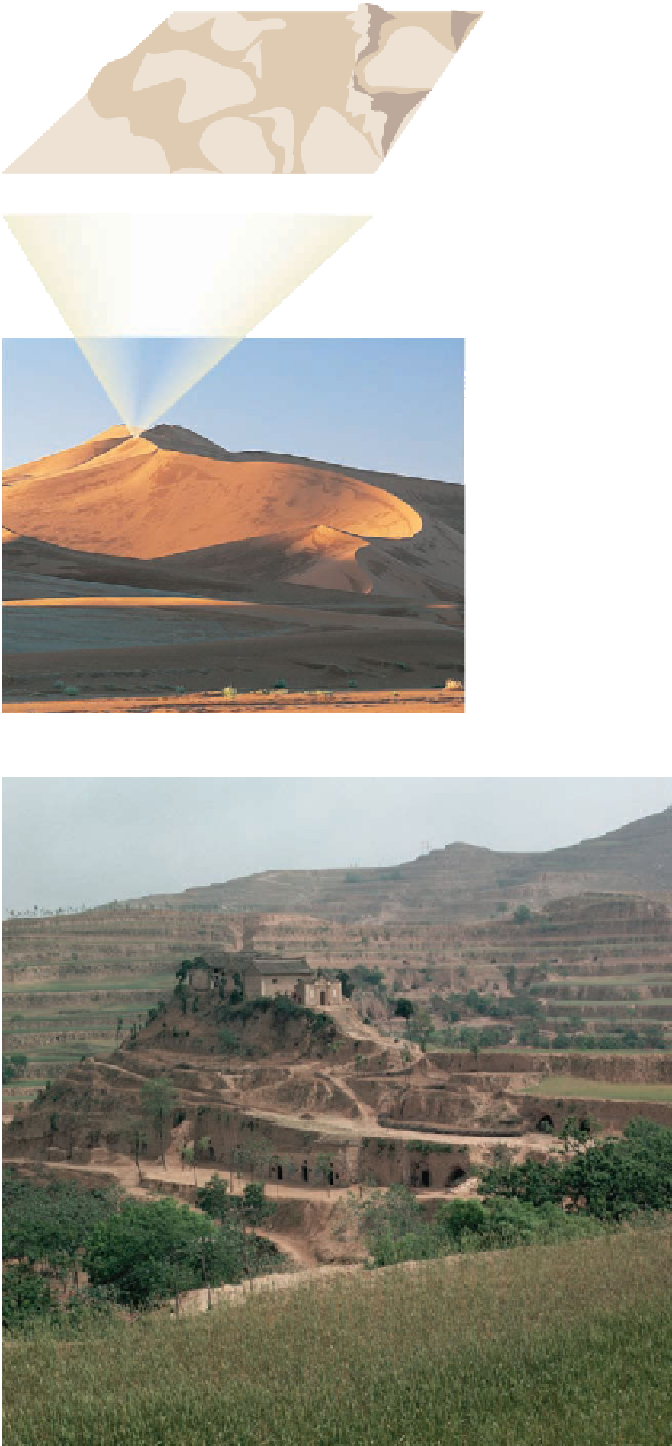Geology Reference
In-Depth Information
◗
Coriolis effect produces a worldwide pattern of east-west-
oriented wind belts (
Figure 15.14
Star Dunes
Figure 15.16).
Earth's equatorial zone receives the most solar energy,
which heats the surface air and causes it to rise. As the air
rises, it cools and releases moisture that falls as rain in the
equatorial region (Figure 15.16). The rising air is now
much drier as it moves northward and southward toward
each pole. By the time it reaches 20 to 30 degrees north and
south latitudes, the air has become cooler and denser and
begins to descend. Compression of the atmosphere warms
the descending air mass and produces a warm, dry, high-
pressure area, the perfect conditions for the formation of
the low-latitude deserts of the Northern and Southern
Hemispheres (
◗
a
Star dunes are
pyramidal hills of
sand that develop
where the wind
direction is variable.
◗
Figure 15.17).
Dry climates occur in the low and middle latitudes where
the potential loss of water by evaporation may exceed the
yearly precipitation (Figure 15.17). Dry climates cover 30%
of Earth's land surface and are subdivided into semiarid
and arid regions.
Semiarid regions
receive more precipita-
tion than arid regions, yet are moderately dry. Their soils are
usually well developed and fertile, and support a natural
grass cover.
Arid regions,
generally described as
deserts,
are
dry; they receive less than 25 cm of rain per year, have high
evaporation rates, typically have poorly developed soils, and
are mostly or completely devoid of vegetation.
The majority of the world's deserts are in the dry
climates of the low and middle latitudes (Figure 15.17). In
North America, most of the southwest-
ern United States and northern Mexico
are characterized by this hot, dry climate,
whereas in South America, this climate
is primarily restricted to the Atacama
Desert of coastal Chile and Peru. The
Sahara in northern Africa, the Arabian
Desert in the Middle East, and the major-
ity of Pakistan and western India form the
largest essentially unbroken desert envi-
ronment in the Northern Hemisphere.
More than 40% of Australia is desert, and
most of the rest of it is semiarid.
The remaining dry climates of the
world are found in the middle and high
latitudes, mostly within continental in-
teriors in the Northern Hemisphere
(Figure 15.17). Many of these areas are
dry because of their remoteness from
moist maritime air and the presence
b
A ground-level view of star dunes in Namib-Naukluft Park, Namibia.
◗
Figure 15.15
Terraced Wheat Fields in the
Loess Soil at Tangwa Village, China Because of
the unconsolidated nature of loess, many farmers
live in hillside caves that they carved from the
loess.














































































































































































Search WWH ::

Custom Search